Since the Swiss guys had left, my daily mileage almost halved. Pushing forward in their companion had been fun, and also had put me a lot ahead of the planned timeline, but being alone I could again contemplate the nature or just stop for a tea invitation.
The city of Safranbolu, which indeed displays great architecture, was just another tourist destination with lots of souvenir stalls and overpriced restaurants. Fortunately, knowing nothing about it's layout, I stayed at the upper, less popular part, just to discover in the morning that the proper center was few kilometers away. I visited it for a breakfast, and then cycled away to stop for the night just before first real mountains.
The route from Araç to Kurşunlu is worth recommendation. Although steep and paved with the worst type of Turkish asphalt (layer of tar and loose gravel on the top), it is worth the effort. Cutting through two mountain ranges, in between it goes down to a huge bend of a river, offering stunning views across the valley. This remote terrain is just perfect for wild camping. I found a nice spot, just next to a small stream cascading down the slope. This was the first river in Turkey, which I found to be clean. So far, all of them I could smell from few hundred meters. Unfortunately, rapidly developing Turkey seems to be merciless to the environment, and all the rivers I had crossed before were streams of stinky, dark gray fluid, which could hardly be called water.
The impact on the environment is not only present in the water, but also on the land. The country is unbelievably littered, and virtually everywhere one can find old plastic bottles or bags. The saddest is the view of picnic sites, often covered with rubbish, like no one cared about the appearance of these places of relax.
Fortunately, beside the littered land and polluted surface waters, there are numerous springs and water taps all across the Turkey. Drinking water is available almost everywhere, despite the overall dry look of the terrain.
From the mountains in the north, I quickly descended to the Anatolian Plateau. Actually, it is still far from being flat, but much easier to cycle than the northern coast. There are downsides, however. The one I felt the first, are the temperatures. Far from the sea, it is easy to feel that the summer has already passed away. The days are warm, but not hot anymore. Together with the sunset, the chill begins instantly. Cloudless sky doesn't protect the ground from radiating all the warmth out, and just before the sunrise the temperatures fall as low as to 0°C. With my light sleeping bag, I have to put all the clothes on. Additionally, around the autumnal equinox the days are getting shorter with dramatic pace. Almost 12 hours of darkness is too much to spend them just sleeping, and the short daytime, after having subtracted the time for eating, shopping and finding a camping spot, limits the cycling period to just few hours a day.
Although the winter is following me faster than I expected, the season for vegetables and fruits seems to be perfect. I enjoy juicy and sweet melons, which are so cheap at the moment, that often I have them offered for free. There is also plenty of tomatoes, much more tasty and few times cheaper than those found in Europe. With addition of inexpensive eggplant, one can compose complete, tasty meals for just one or two Turkish Liras. The only expensive goods I cannot resist, are sweets. Baklava still remains my favourite, but hazelnut creams and broad variety of puddings and sweet cakes form a huge palette of tastes, that I'm devoted to explore before leaving the country. Sometimes I also enjoy meals at restaurants: kebabs, pitas, lahmacuns. Turkish cuisine is one of the best I have tasted in my life, and the only thing I'm missing here, is rye bread, which would probably not appear again, after I have left Slavic lands.
The monotonous landscape east from Ankara changes when one reaches the famous salt lake, called Tuz Gölü in Turkish. Just after this vast area covered with white, moist salt, the first shape of an enormous mountain appears. Hasan Dağı is one the biggest volcanic peaks, which pierce the surface of central Anatolia. Their activity in the past had brought a thick layer of ashes, which in turn, after long period of erosion, gave birth to awesome features of the land called Cappadocia. The cliffs of Ihlara Valley and the cone-shaped rocks there and around Göreme would not be so interesting, without the traces left by countless generations of inhabitants of these lands. The soft, post-volcanic rock was easy to dig into, and entire region is full of cave houses, or even underground cities. Most of them are now on the UNESCO World Heritage List, and are highly priced tourist attraction, but the remains of ancient civilizations can be found everywhere. Camping in the fields, somewhere between Aksaray and Ihlara, I found a rock with remains of an old Christian chapel. It seems that long ages ago, someone had became charmed by the great view from that place, just as I did when picking a site for the night rest. The civilizations may appear and vanish, travelers come and go away, but the natural beauty is eternal there.
Crossing the Ihlara Valley, I spotted a bike traveller, busy with repairing his vehicle, which suffered some damage during a bumpy ride over stones. Marek, being a German despite his Polish name, is on his bicycle journey from Leipzig to India. We instantly decided to go together, at least to Kayseri, where he would turn more north, in order to get his Iranian visa in the famous Trabzon consulate.
Together we visited the underground city in Derinkuyu and cycled north, to the center of Cappadocia. Already used to see few tourist after the summer had finished, we were surprised to meet crowds again in Göreme. Seems that these places attract many visitors all around the year, and I don't want to imagine what happens there in the high season. The open-air museum was just little more than a fight to enter crowded churches, definitely not worth it's high price of the ticket. Instead, it is just better to wander around, among endless rocks, where one can find churches or old houses, sometimes quite well preserved. Although the footpaths, signs on walls and rubbish don't make you feel like a discoverer, it's less crowded there, free, and photography is not restricted.
After this mass-tourism experience, I'm now eager to see the mountains behind Kayseri. However, due to low temperatures at nights, it is not probable that I would climb Mount Nemrut to see the famous stone heads at sunrise. If it's already freezing at 1000m, camping at 2100m would be impossible with my summer equipment. I still have to review my plans for the rest of Turkey, and to plan well the moment of entry into Syria, as my visa expires in the middle of November.

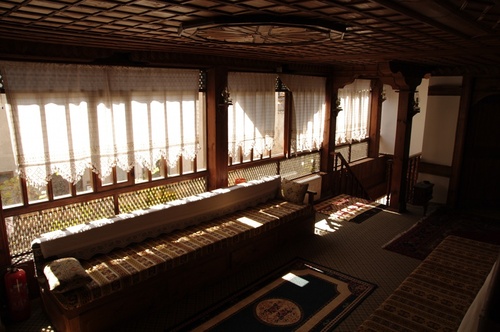
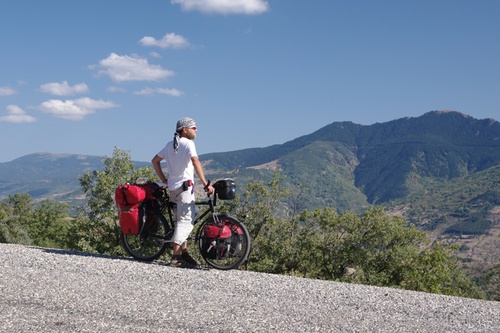
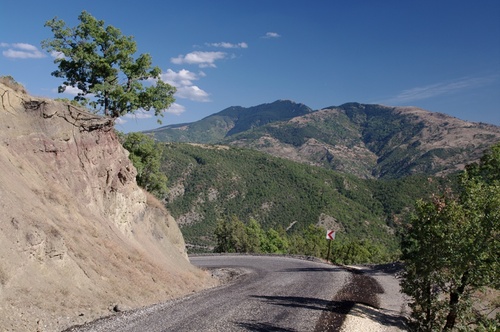
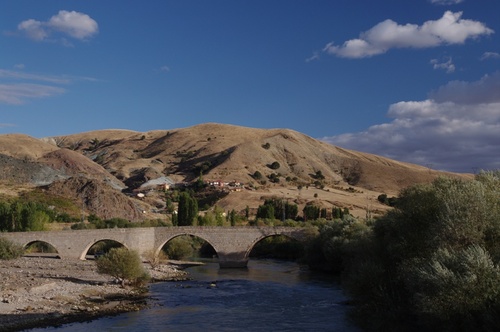
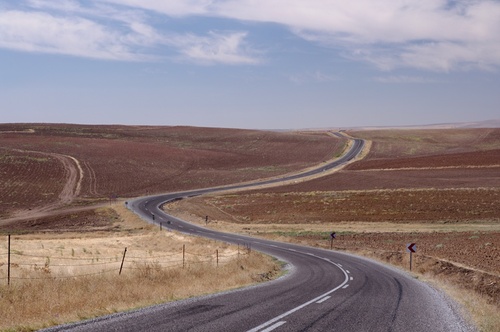
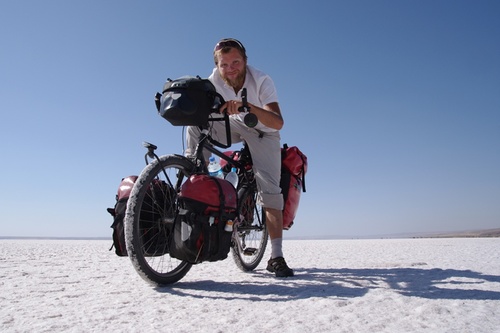
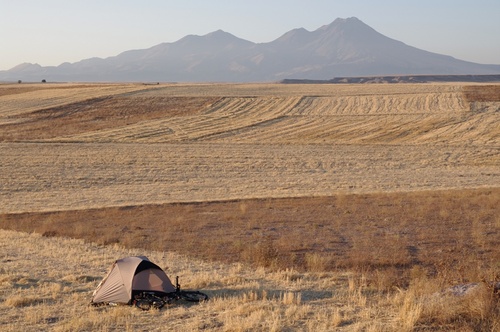

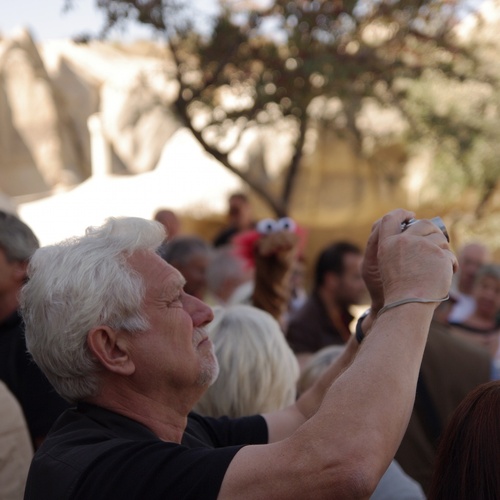



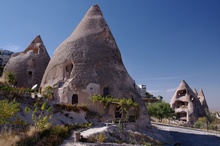

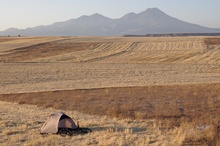
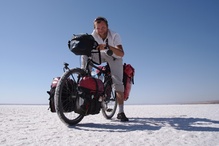
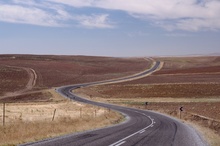
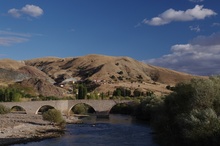
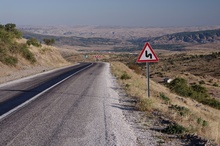
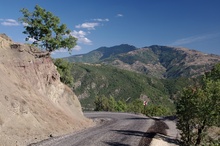

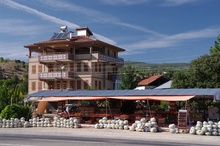
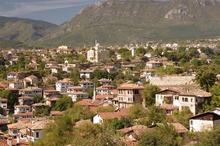
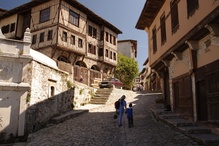
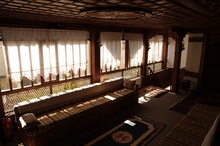
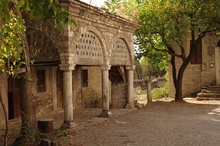
Comments:
mama
azbest87
Pozdro!
erzete
Puchalka
Marta
Prócz widoków i wolności zazdroszczę baklawy... i kremu z orzechów laskowych...
Pozdrawiamy, Marta i Waldek
kaha
wojtek
iwo
nast
barylówka
kaha
Robb
Jak by co to mamy sklep rowerowy w Adana - super koleś, mechanik i przemiły :-)
EEEEEEEmeeeeeesssss .. jedziesz chłopie jedziesz :-)
Pozdrawiamy z przemarzniętej Polszy
Hania / mumum
piękne zdjęcia, piękna okolica i słońce :)
zazdroszczę tych warzyw i owoców :)
czekam na dalszy ciąg :)